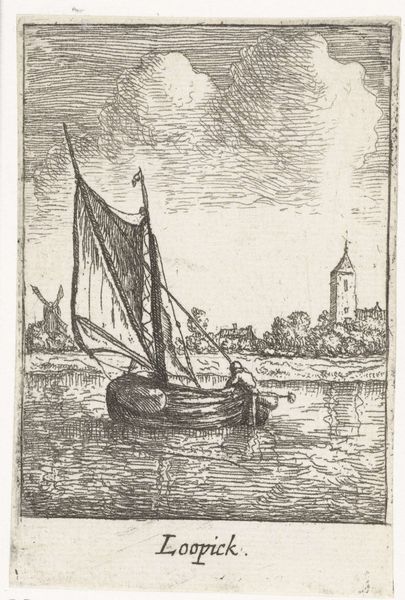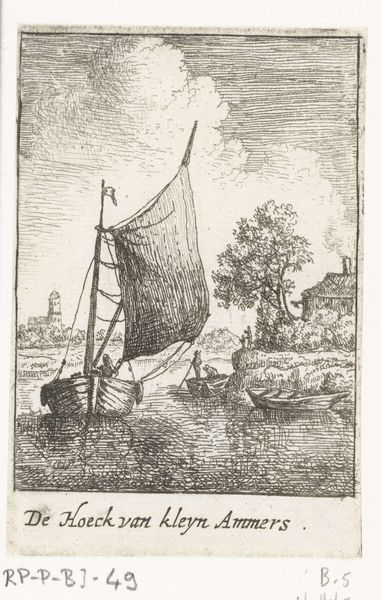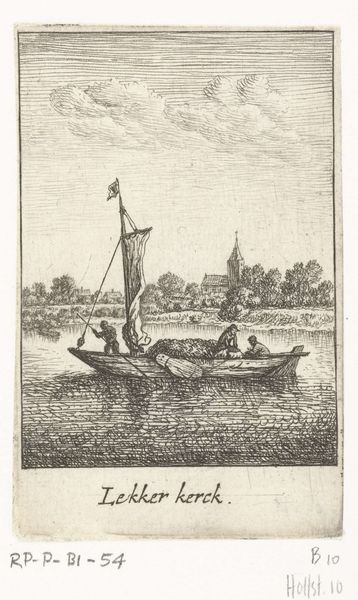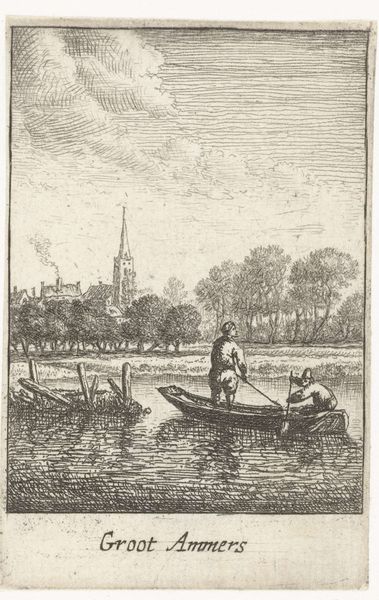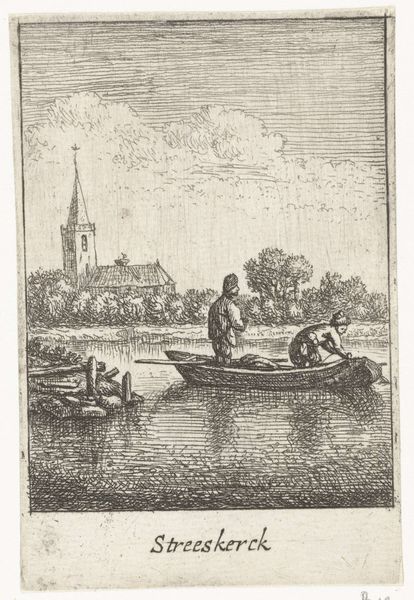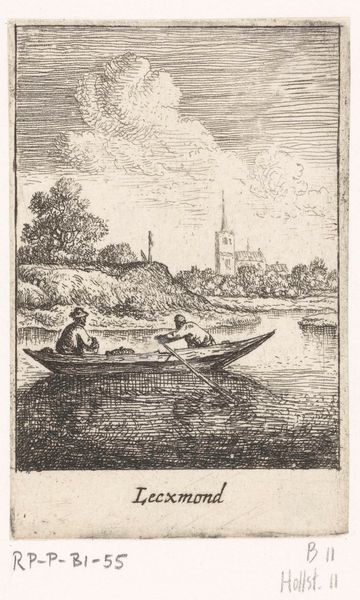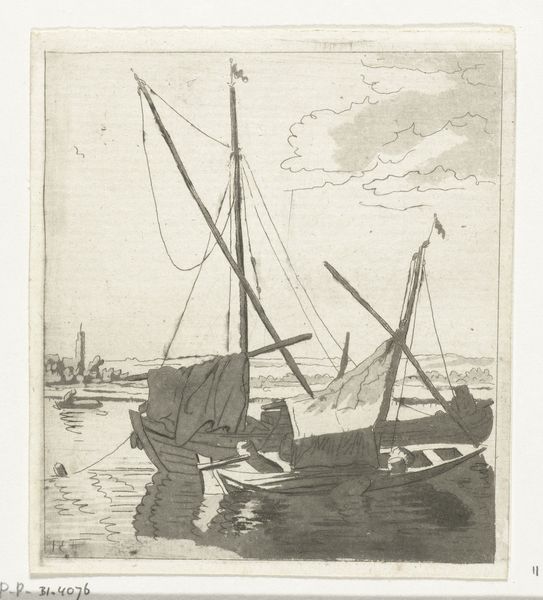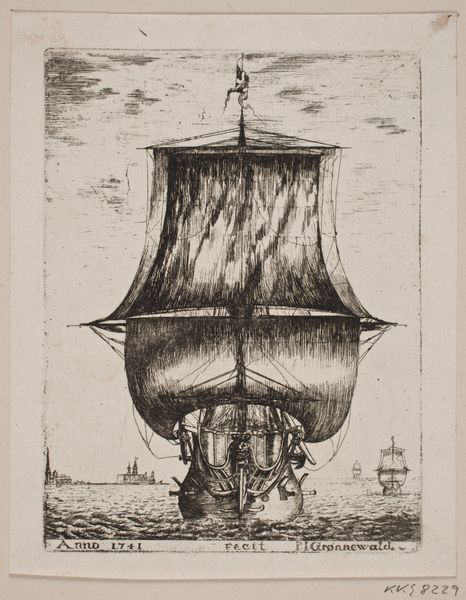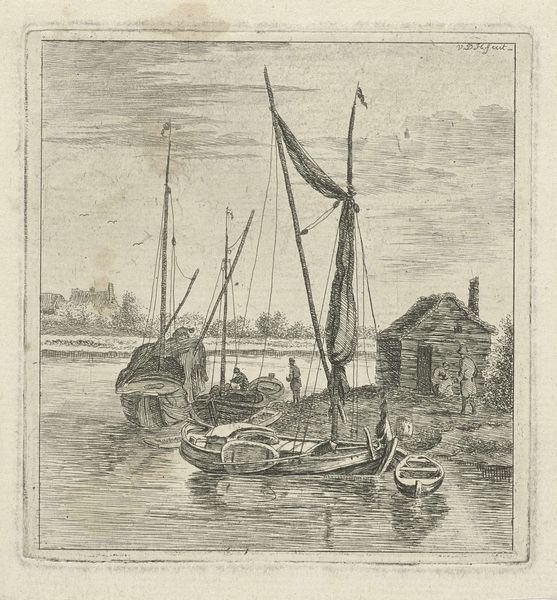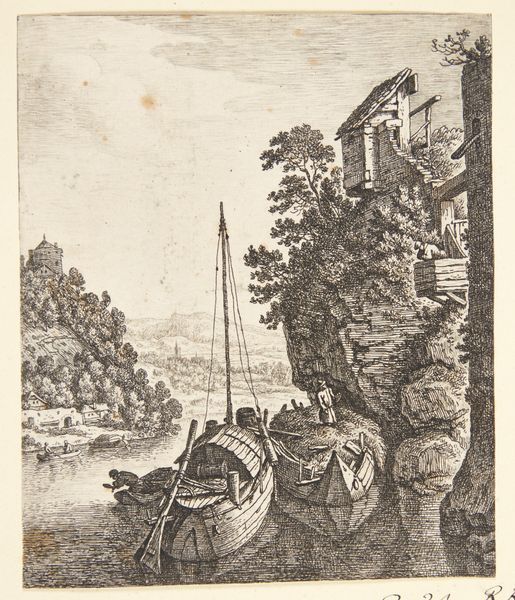
print, etching
#
dutch-golden-age
# print
#
etching
#
landscape
#
line
#
cityscape
#
genre-painting
#
realism
Dimensions: height 85 mm, width 55 mm
Copyright: Rijks Museum: Open Domain
Editor: This is Jan van Almeloveen’s “Gezicht op Langerak,” an etching dating from somewhere between 1662 and 1683. I’m really struck by the level of detail he achieves with just line work. The figures, the buildings in the distance—they all feel so grounded and real. What do you see in this print? Curator: I see a microcosm of Dutch society in the Golden Age. Etchings like this were widely circulated, essentially acting as a kind of proto-photography, disseminating images and ideas across the country. Look at the ordinary people depicted, the unassuming townscape, the emphasis on everyday life and labor – Almeloveen democratizes representation by depicting accessible views, fostering a shared visual culture and sense of national identity. How might prints such as these function within a broader context? Editor: Well, by distributing these accessible images so widely, Almeloveen kind of creates a shared sense of place, and pride too. Did the prevalence of these prints help to further secure a solid national identity? Curator: Exactly! It's fascinating how these prints helped to codify Dutch identity, but also remember they had economic value. Landscape etchings were marketable goods, purchased by burghers who used them to adorn their homes, as souvenirs, or maybe sent them abroad. Almeloveen capitalized on the growing art market of the time. And that small detail has a far wider effect. What did art patronage look like then, in contrast to that of the Renaissance, for example? Editor: The accessibility seems to create new dialogues. It's so different from royal or religious commissions, with their established sets of beliefs. So much to consider… Curator: Absolutely. This work makes us think about the role of art as a public document and agent for cultural identity. Seeing the world through Almeloveen’s eyes gives us insights into how people saw themselves at the time, and, in some small measure, also demonstrates the democratizing agency that is present when creating art.
Comments
No comments
Be the first to comment and join the conversation on the ultimate creative platform.
